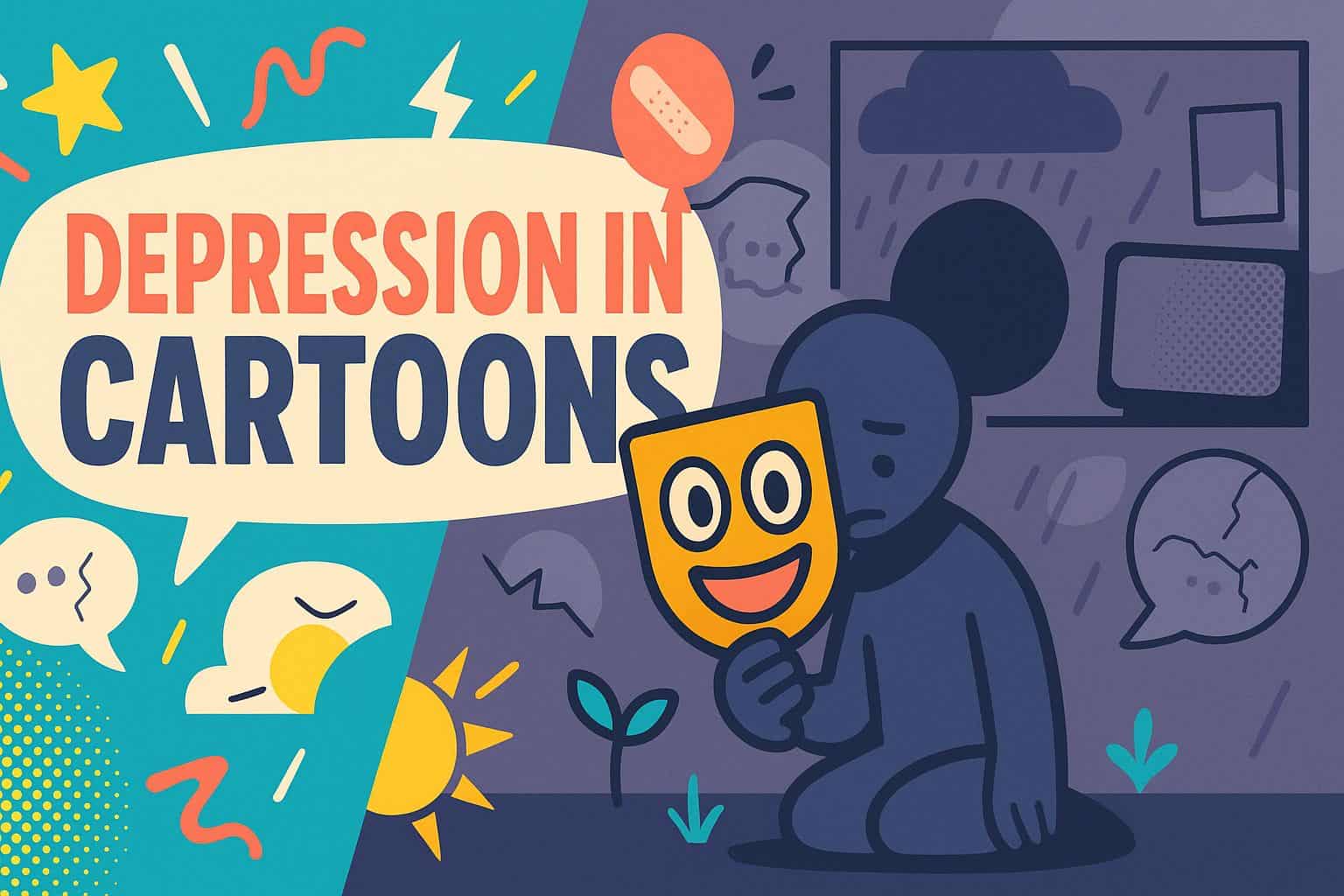Ever feel a little like Eeyore on a cloudy day, even when everyone else is bouncing around like Tigger?
You’re not the only one.
Sometimes, seeing our own struggles reflected in a cartoon character like BoJack Horseman can feel surprisingly comforting. The way cartoons explore depression isn’t just about sad donkeys; it’s a powerful way to talk about feelings many of us face.
The World Health Organization’s 2023 data notes that around 280 million people globally live with depression. It’s incredibly common, and cartoons are starting to handle it with more honesty than ever before.
I’m going to walk you through how some of our favorite animated shows use storytelling to explore tough topics like mental health disorders and coping mechanisms. We’ll look at the key signs of depression in these characters and maybe find some new ways to think about our own mental health too.
Key Takeaways
Cartoons like “Winnie the Pooh,” “BoJack Horseman,” and “Frozen” use their characters to display real symptoms of mental health conditions, including Persistent Depressive Disorder (dysthymia), Major Depressive Disorder (MDD), and substance abuse.
With the World Health Organization reporting that 280 million people worldwide live with depression, animated series help normalize these struggles by blending humor and storytelling, allowing viewers to recognize signs like low self-esteem, guilt, and unhealthy coping mechanisms.
Pixar’s “Inside Out” personifies emotions, with the character Sadness representing key aspects of depression, while short films like “Bear” use powerful symbolism to communicate how emotional pain can feel like an invisible, heavy burden.
Cartoon scenes often depict real-life symptoms with surprising accuracy: BoJack’s substance abuse is linked to his childhood trauma, Eeyore’s chronic pessimism aligns with clinical dysthymia, and Elsa’s years of isolation are a direct result of guilt and fear.
Experts in psychology, like Dr. Janina Scarlet who created “Superhero Therapy,” believe that modern animation will continue to tackle complex disorders, helping to reduce stigma and encourage open conversations about mental illness.
Table of Contents
How are mental health stories portrayed in cartoons?
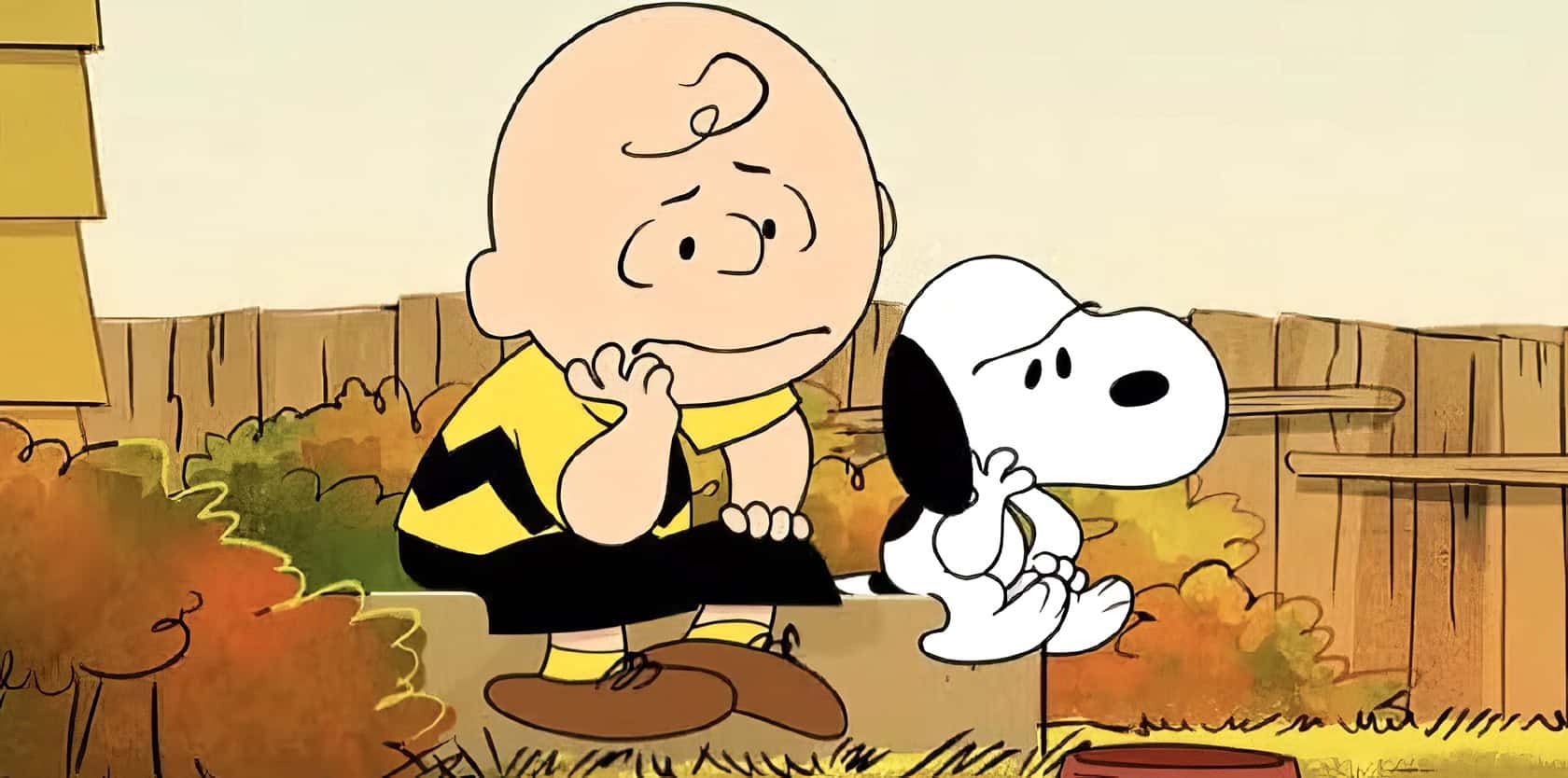
Shows from the Hundred Acre Wood to Hollywoo use their animated worlds to explore real struggles, mixing humor with heavy topics. This approach makes it easier for us to see and understand signs of mood disorders and low self-esteem in characters we’ve grown to love.
Why are mental health narratives important in animation?
Animation has a unique power to make internal struggles visible. A character like BoJack Horseman gives a physical form to complex feelings like depression, guilt, and addiction in a way that live-action sometimes can’t.
These stories help us connect with and talk about mental illnesses like Persistent Depressive Disorder or Major Depressive Disorder. Seeing familiar faces like Charlie Brown or Elsa grapple with low self-esteem makes these topics less intimidating.
Creators like Rebecca Sugar of Steven Universe have intentionally used their platforms to explore themes of trauma and recovery. Sugar’s work shows how animation can create a safe space for viewers to process difficult emotions.
Initiatives like Time to Talk Day encourage open conversations, and animation adds to this by showing us what these feelings look like. This helps everyone, from young geeks to seasoned fans, relate to these experiences and helps reduce the stigma around nerdy cartoon characters and their very human problems.
How do cartoons depict depression and related disorders?
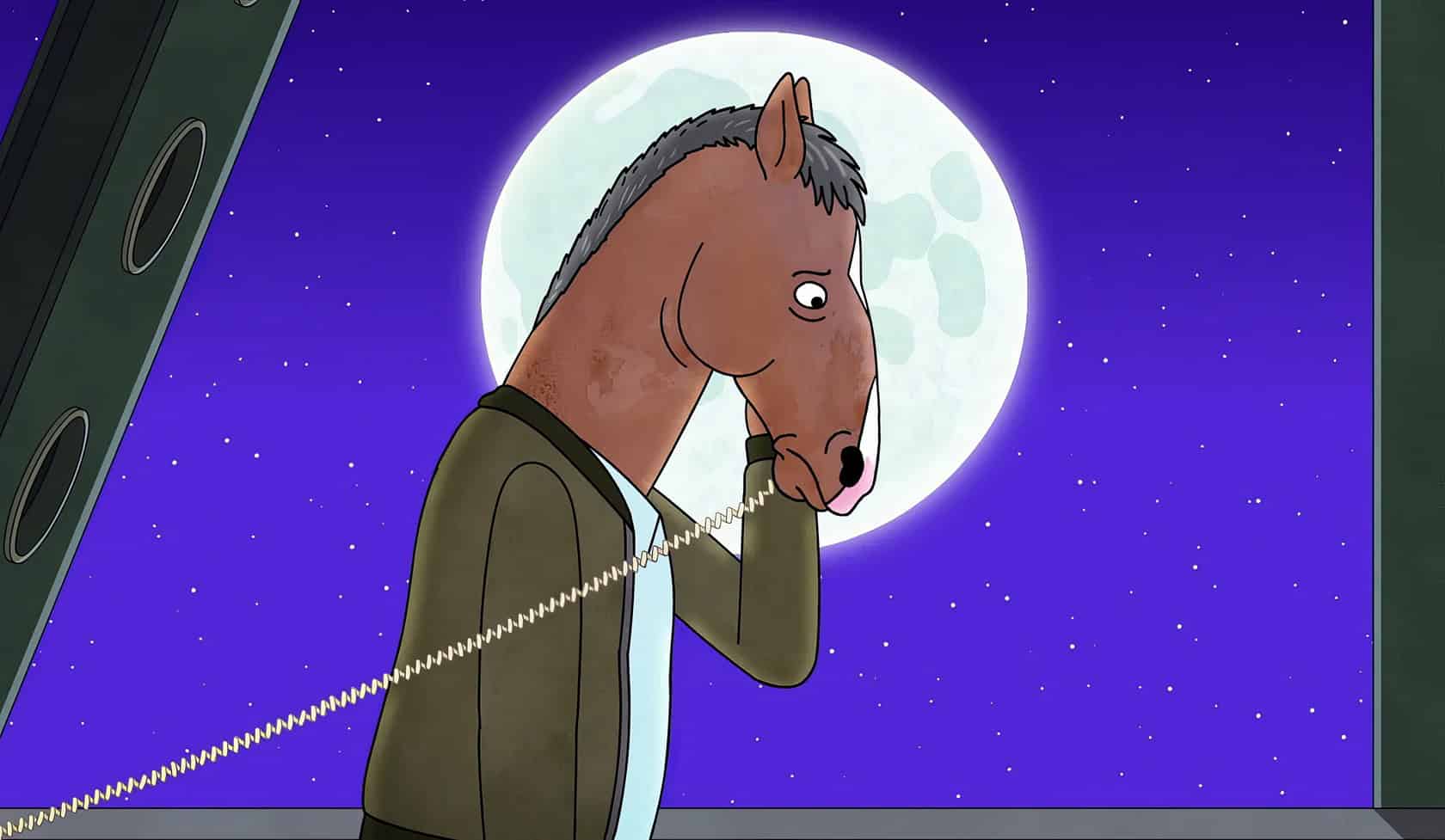
Shows like BoJack Horseman use dark humor and sharp satire to portray depression with brutal honesty. The characters often rely on unhealthy coping mechanisms, like substance abuse, showing the real-world consequences of their pain.
BoJack’s story is a deep-dive into major depressive disorder (MDD), guilt, and the long-term effects of childhood trauma, and the show never tries to make it look cool or edgy. It’s all about authenticity.
Visuals play a huge role. Many creators use color theory to signal a character’s mental state. A 2020 study in Color Research & Application confirmed that viewers strongly associate desaturated, darker colors with feelings of sadness, a technique used in many animated series to visually cue a depressive episode.
Other key symptoms you might spot include:
- Low mood and hopelessness: Eeyore is the classic example, quietly living with dysthymia.
- Social withdrawal: Elsa isolates herself for years, mirroring a common symptom of MDD.
- Erratic behavior: Characters may lash out or make impulsive decisions, as seen with BoJack’s self-sabotage.
These depictions help start important conversations about why depression sucks and how it shows up in real life.
“People don’t change because they want to; people change because they have to.” — BoJack Horseman
Notable cartoon characters and their mental health conditions
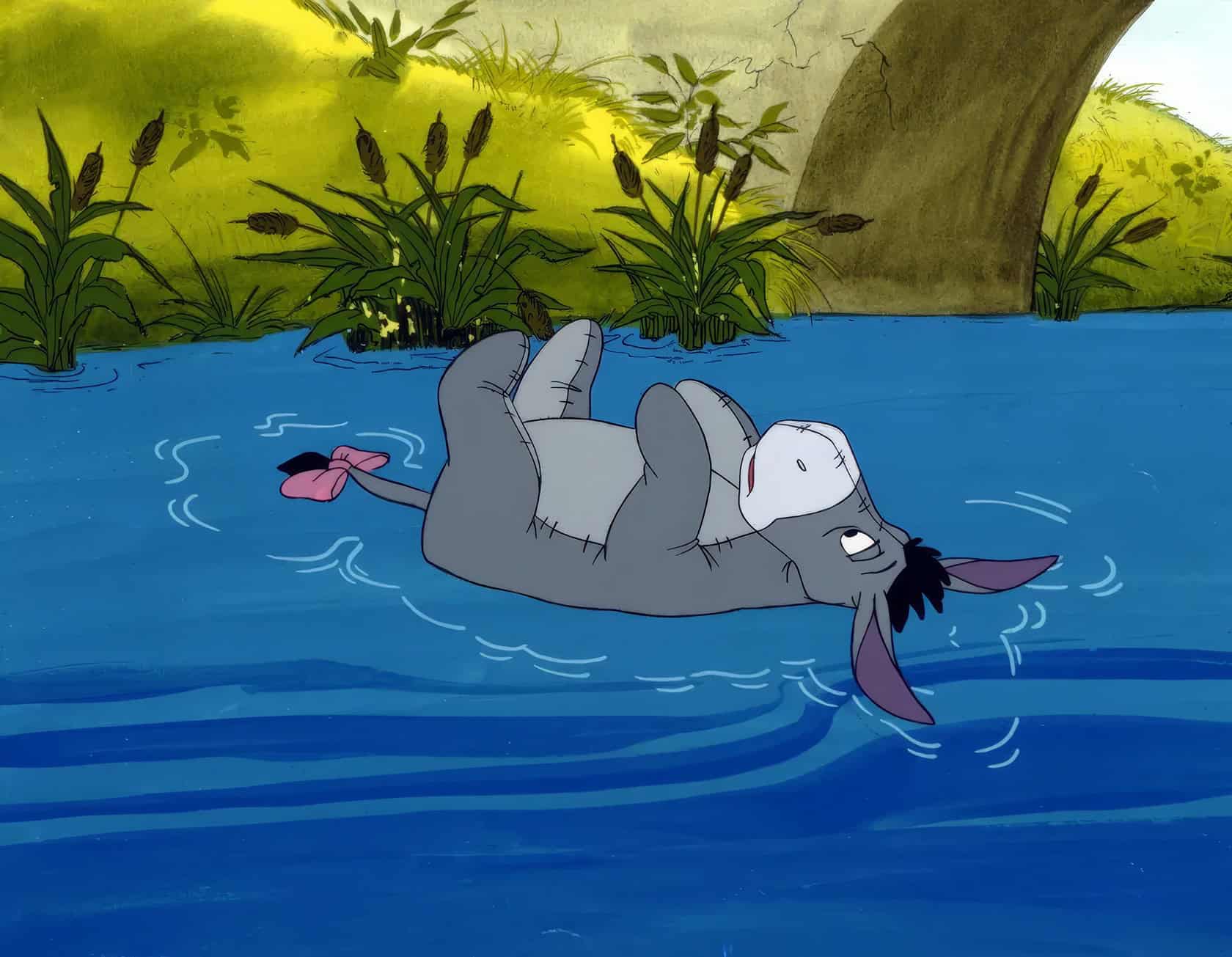
From heroes to has-beens, animated characters often provide a surprisingly clear window into what mental illness feels like day-to-day. Characters in shows from “Winnie the Pooh” to “BoJack Horseman” put a face on depression, addiction, and anxiety without sugarcoating the experience.
What does Eeyore teach us about Persistent Depressive Disorder (Dysthymia)?
Eeyore is our lifelong guide to Persistent Depressive Disorder, also known as dysthymia. He’s not having a single bad day; he’s living with a chronic, low-grade gloom. His slow movements, shuffling feet, and signature phrases like, “Thanks for noticing me,” paint a clear picture of long-lasting sadness.
Eeyore’s condition aligns with the clinical definition of dysthymia, which involves a depressed mood lasting for at least two years. We see him consistently display core symptoms like low self-esteem, pessimism, and hopelessness. His tendency to stay on the edge of social gatherings in the Hundred Acre Wood is a classic example of social withdrawal associated with the condition.
His friends, like Pooh and Tigger, don’t try to “fix” him. Instead, they offer quiet companionship and include him anyway. Their gentle acceptance highlights how empathy and steady support can make a huge difference for someone with a chronic mental health condition.
How does Elsa represent Major Depressive Disorder (MDD)?
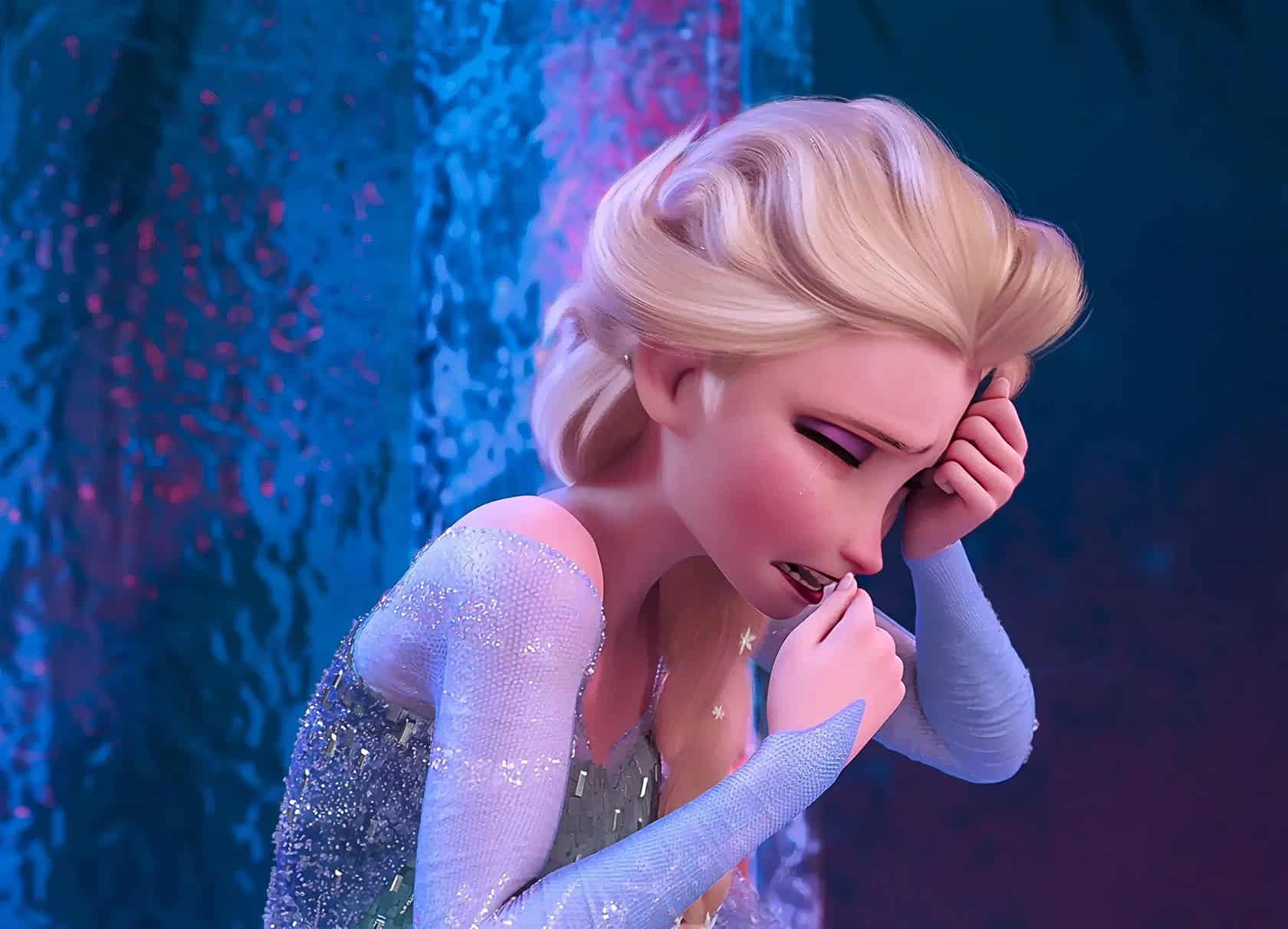
If Eeyore shows us the slow drizzle of dysthymia, Elsa from Frozen plunges us into the icy blizzard of Major Depressive Disorder (MDD). She doesn’t just feel sad; she’s overwhelmed by guilt and fear related to her powers, leading her to completely isolate herself in a castle of her own making.
Her signature song, “Let It Go,” isn’t just a power anthem. It’s a complex moment of releasing years of pent-up emotion, but it’s also about her doubling down on isolation as a coping mechanism. This aligns with research on emotional suppression. A study from the University of Texas at Austin found that bottling up emotions can actually make them stronger and lead to worse mental health, which is exactly what happens to Elsa until she learns to accept herself.
Elsa’s symptoms are a checklist for MDD: severe withdrawal from activities she once loved, profound guilt, and a loss of interest in life that lasts for years. Her story powerfully illustrates how MDD can freeze someone from the inside out, blocking out love and connection.
What are the signs of depression and substance abuse in BoJack Horseman?
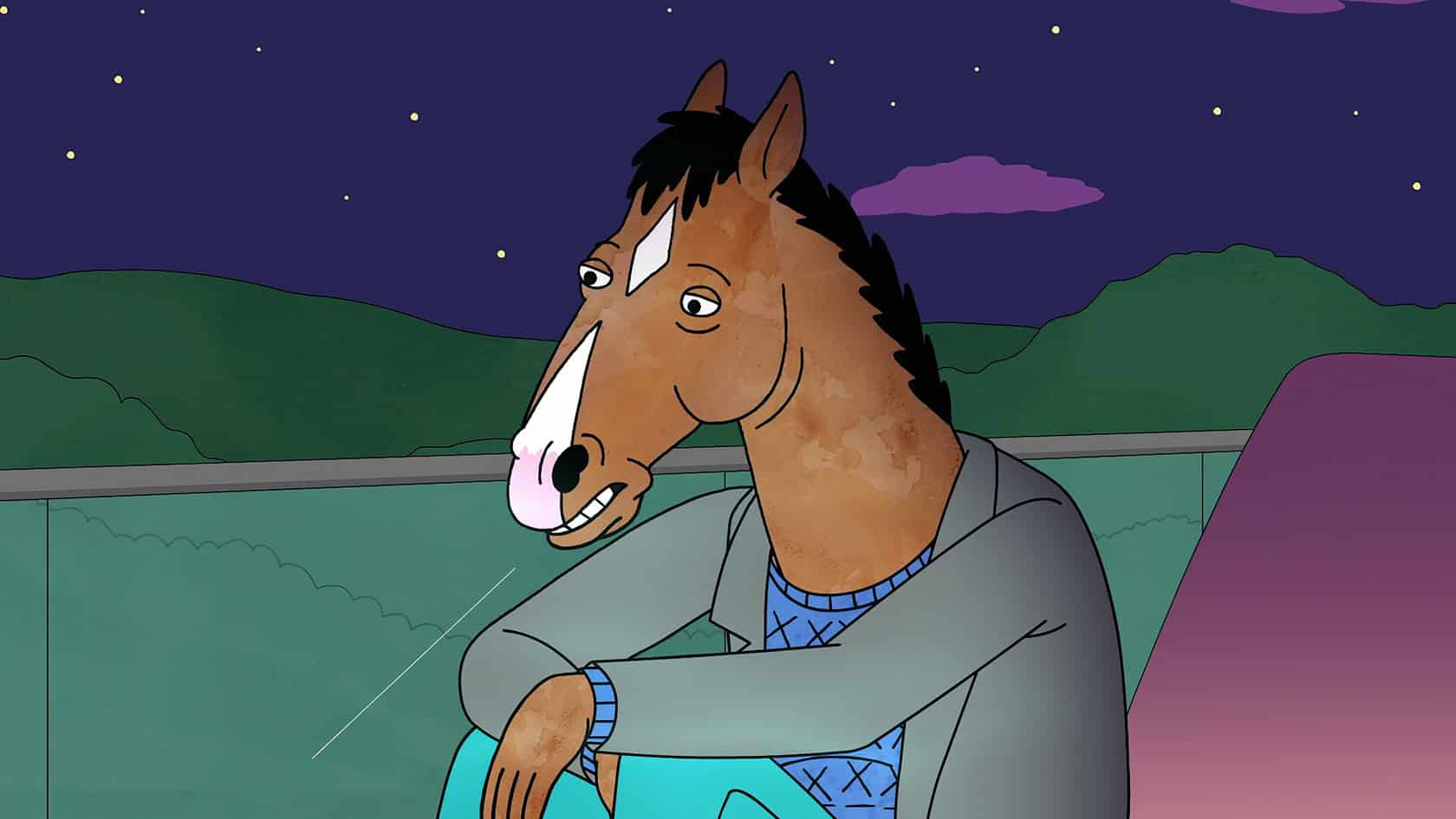
BoJack Horseman offers one of the most raw and unflinching portrayals of mental illness in animation. His struggles with Major Depressive Disorder (MDD) are evident in his inability to get out of bed, his constant self-sabotage, and his use of alcohol and pills to numb the pain.
His inner monologue is relentlessly cruel, filling him with guilt over past actions. This self-loathing is often a symptom of what some viewers and professionals identify as traits of Borderline Personality Disorder (BPD), including a deep fear of abandonment and unstable relationships. The show ties his adult struggles directly to his childhood trauma, stemming from his neglectful and abusive parents, Beatrice and Butterscotch.
Episodes like “The View from Halfway Down,” which holds a near-perfect 9.9/10 rating on IMDb, are praised for their surreal and devastating look at the psyche during a moment of crisis. BoJack’s journey shows that substance abuse and impulse control issues are often intertwined with deep-seated mental health struggles.
How does Charlie Brown illustrate Avoidant Personality Disorder (APD)?
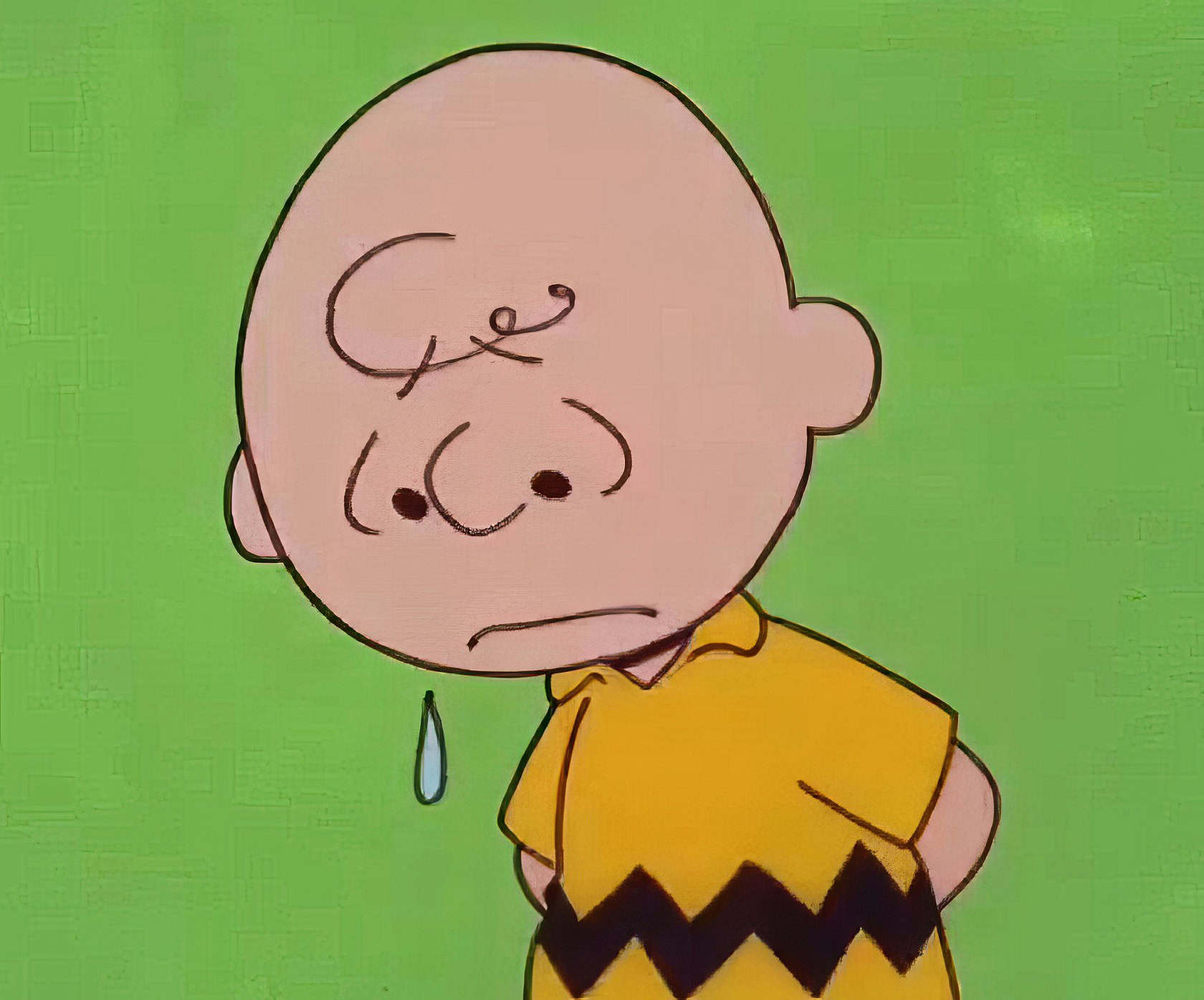
Good ol’ Charlie Brown lives with a constant fear of being judged, rejected, or seen as a failure. He avoids social events and baseball games because he’s convinced he’ll mess up. This isn’t just shyness; his behavior points directly to Avoidant Personality Disorder (APD).
While often confused with social anxiety, APD is broader. According to the Cleveland Clinic, it involves avoiding occupational or school activities due to fear of criticism, which we see in Charlie Brown’s persistent baseball woes. His constant social inhibition and feelings of inadequacy are the core of his character.
I’ve developed a new philosophy… I only dread one day at a time. – Charlie Brown
Creator Charles Schulz, who was known to be shy and deal with his own feelings of depression, infused much of his personal experience into the character. He once said in an interview, “I have this awful feeling of impending doom.” That feeling became Charlie Brown’s permanent companion, a perfect illustration of how APD can leave someone feeling isolated even when surrounded by friends.
Metaphorical and symbolic portrayals of depression in animation
Sometimes, the best way to show a hidden struggle is through a powerful metaphor. Cartoons like “Inside Out” and the short film “Bear” use characters and symbols to visualize emotional pain in ways that are deeply relatable, even to Spongebob Squarepants.
How does “Inside Out” personify depression?
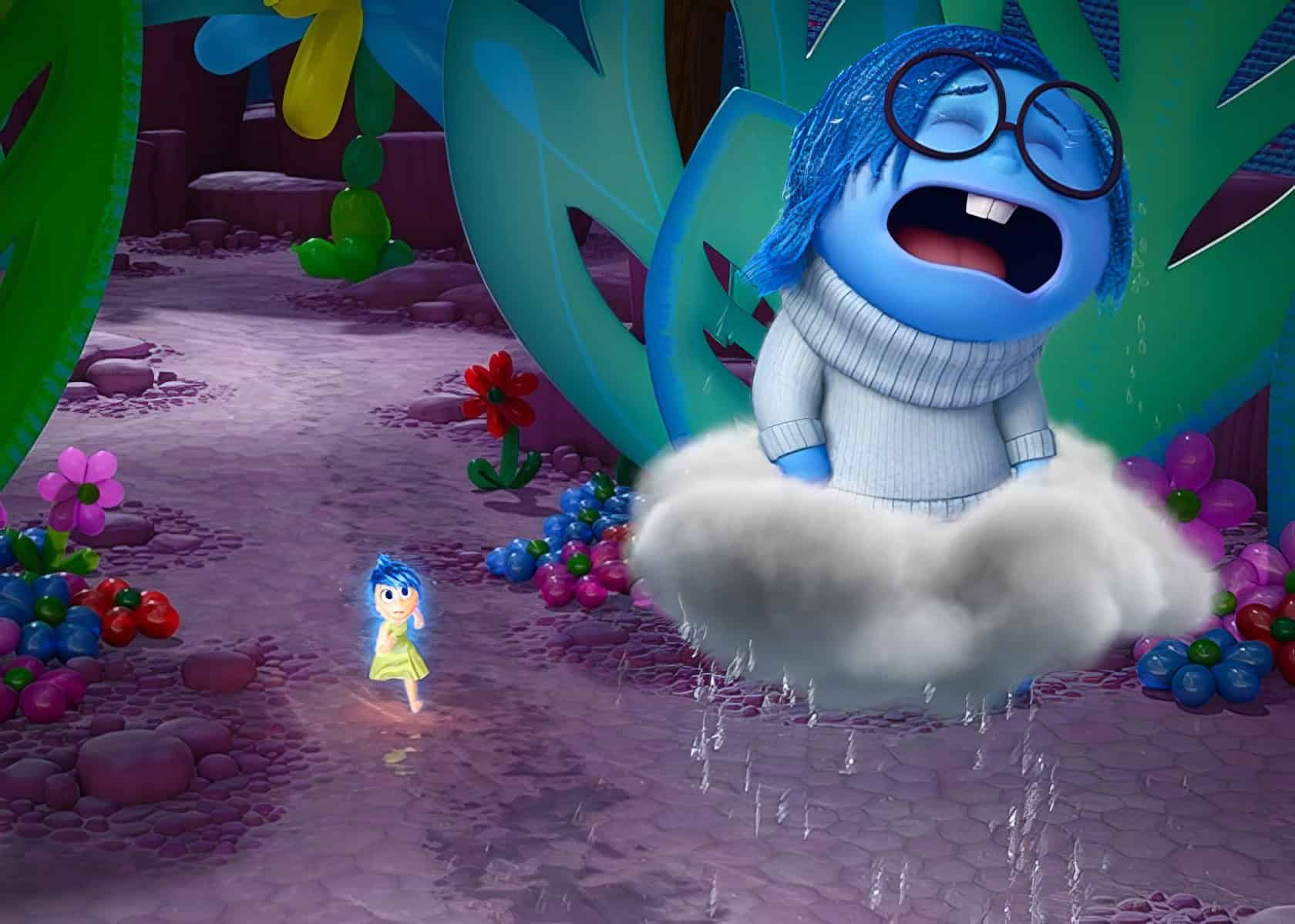
In Pixar’s “Inside Out,” the emotion Sadness is the face of depression. She isn’t a villain; she’s a necessary part of the main character Riley’s emotional ecosystem. When Sadness touches one of Riley’s memories, it turns blue, a simple yet brilliant visual for how depression can color our entire worldview.
The film’s accuracy was guided by psychological consultant Dr. Dacher Keltner from UC Berkeley. He helped shape the core message: acknowledging and accepting sadness is essential for mental well-being. Joy spends most of the movie trying to sideline Sadness, but eventually learns that empathy and true happiness are impossible without it.
“Inside Out” challenges mental health stigma by showing that every emotion has a purpose. It helps kids and adults understand that depression isn’t a weakness but a part of our mental health that requires care and attention.
What does the bear symbolize in “Bear” regarding depression?
The animated short film “Bear” by Bianca Minnaar offers a perfect metaphor for living with depression. The main character is followed everywhere by a giant, silent bear. It doesn’t attack; it just exists, its heavy presence making every action more difficult.
The bear is the weight of depression made visible. It’s the invisible burden that you have to drag around, even on good days. It’s a powerful example of the “Show, Don’t Tell” rule of storytelling. Without a single word of dialogue, the film communicates the exhaustion and isolation that comes with a persistent depressive disorder.
“Sometimes my shadow feels heavier than I am; some days, I swear my sadness could eat me alive.”
For those of us in geek culture who appreciate strong symbolism, “Bear” is a masterpiece. It takes an internal, invisible struggle and makes it tangible and impossible to ignore.
How does “Fallin’ Floyd” visually represent emotional struggles?
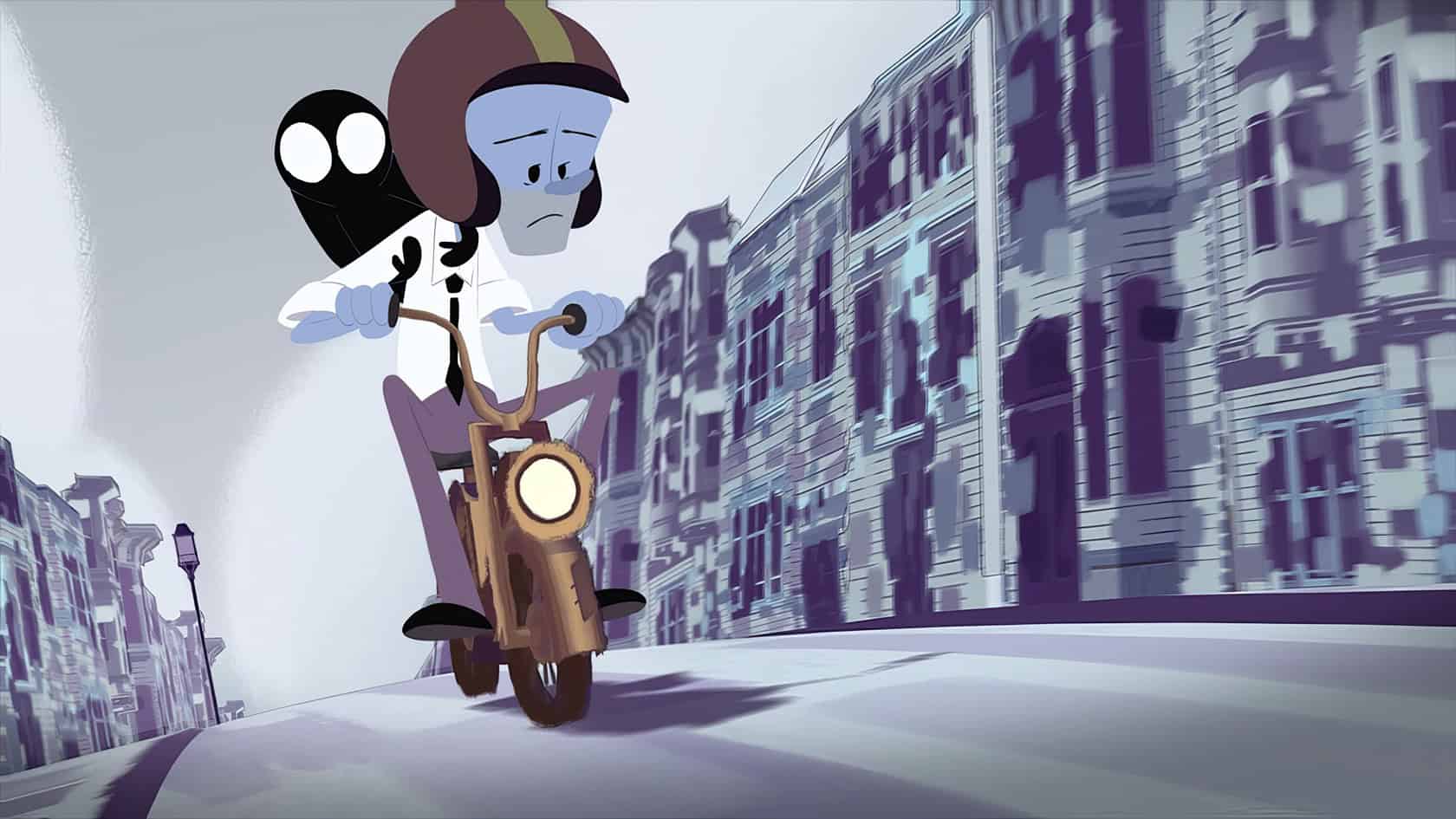
Much like the bear, the short “Fallin’ Floyd” by Albert ‘t Hooft and Paco Vink uses stunning visuals to represent a mental health battle. The film relies on silent storytelling to show the main character’s fight with depression.
The animators use dramatic shifts in color, with gloomy blues and grays washing over once-vibrant scenes. This visual shift makes Floyd’s world feel heavy and oppressive. The cyclical nature of his struggles is shown through repeating landscapes and endless falling loops, a feeling that anyone who has experienced depressive episodes can relate to.
Obstacles appear like comic-book villains, and other characters fade away, highlighting the intense isolation that often accompanies emotional struggles. The film is a testament to how animation can capture the pain of mental illness in a way that words sometimes cannot.
How does animation contribute to mental health awareness?
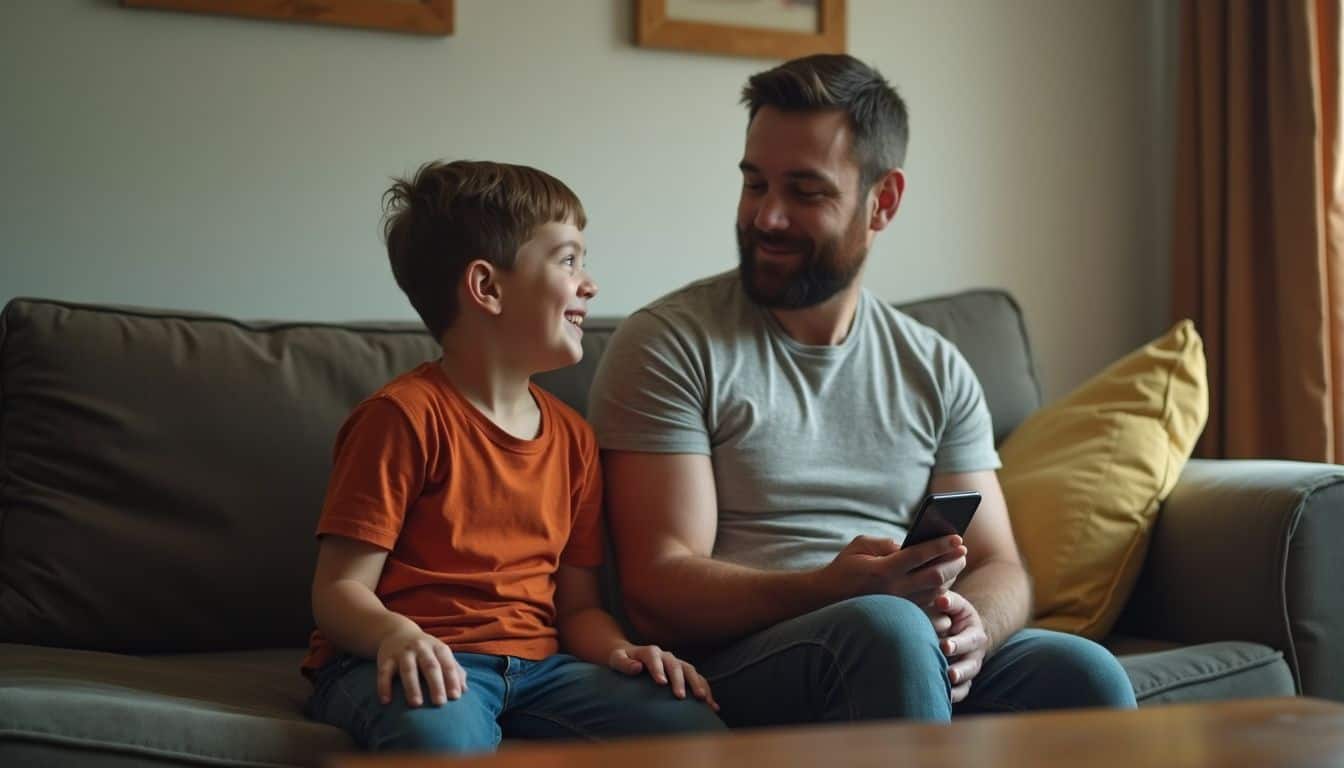
By putting characters like Eeyore and BoJack on our screens, animation does more than just entertain. It opens up crucial conversations about real-life emotional struggles and plays a big role in promoting mental health awareness.
What is the therapeutic potential of animated stories?
For many of us, watching a character navigate their depression can feel incredibly validating. Animation makes complex topics more accessible and less threatening than clinical explanations. A 2021 study in the Journal of Medical Internet Research found that an animated app based on Cognitive Behavioral Therapy (CBT) significantly reduced symptoms of depression and anxiety in young adults.
This idea is even used in a formal approach called Cinema Therapy, where clinicians use films to help clients process their feelings. Watching a character overcome a struggle can provide a sense of hope and a roadmap for recovery.
Cartoons meet us where we are, using visuals and sound to explain coping mechanisms in a way that’s easy to digest. It makes you feel like an active participant in understanding your own mental health.
How does animation help reduce mental health stigma?
Shows like BoJack Horseman and Big Mouth start conversations about topics that used to be taboo, like depression, anxiety, and substance abuse. When we see BoJack relapse or the “Anxiety Mosquito” attack Nick, these experiences feel less alien and more universal.
This increased representation is having a real effect. A 2023 survey by the American Psychiatric Association found that 65% of young adults are more comfortable discussing their mental health today than they were just five years ago, a shift often linked to better media portrayals.
Characters like Eeyore and Elsa make depression feel familiar. They turn a scary diagnosis into a shared experience, sparking talks between friends and family. This fosters empathy and helps break the cycle of shame that has long been associated with mental illness.
How will mental health storytelling in cartoons change in 2025?
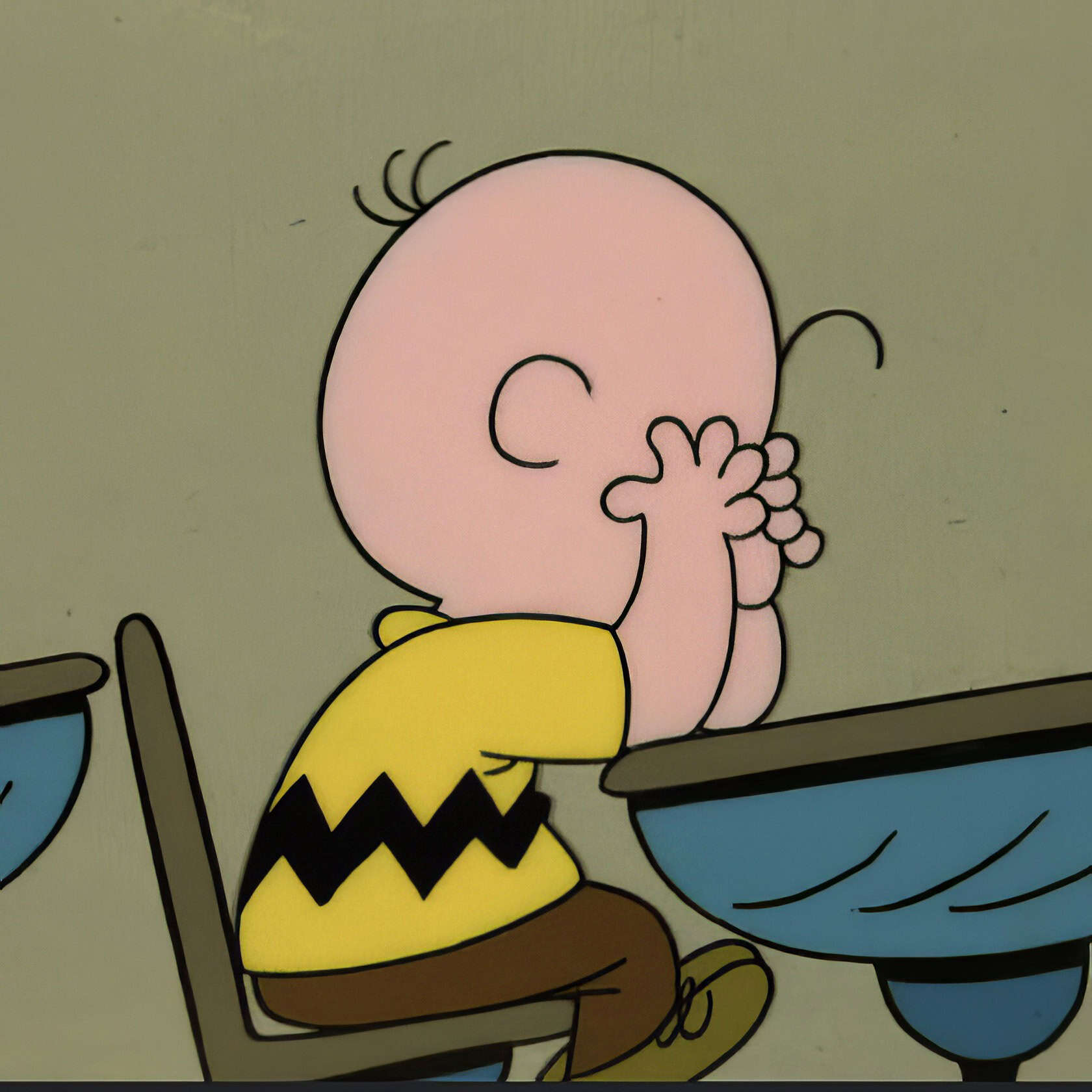
The future of mental health storytelling in animation looks even brighter and more honest. With the boom in adult animation on streaming services, we’re seeing a trend toward more psychologically complex shows.
Series like Arcane, which explores Jinx’s deep-seated trauma and psychosis, are setting a new standard for serialized, mature narratives. This trend is supported by market data. A 2024 report from Grand View Research noted a rising demand for content aimed at young adults, the demographic most engaged in mental health conversations.
We can also expect to see the influence of experts like Dr. Janina Scarlet, a clinical psychologist and author. She developed a method called “Superhero Therapy” and wrote the book *Superhero Therapy: A Book for Geeks, Freaks, and Those Who Need to Be Rescued*. She uses characters like The Hulk to help patients explore their own feelings of anger and trauma.
This approach perfectly bridges the gap between geek culture and mental health treatment. It shows that the characters we love can be more than entertainment; they can be tools for understanding ourselves.
As we move forward, animation will likely tackle even more nuanced topics, from bi-polar disorder to narcissistic personality disorder, continuing to reduce stigma and remind us all that it’s okay not to be okay.
People Also Ask
How do cartoons like Winnie the Pooh and BoJack Horseman help us understand mental health?
By portraying characters like Eeyore with persistent depressive disorder, or dysthymia, and BoJack Horseman’s struggles with addiction and self-loathing, these cartoons provide a relatable framework for complex mental health issues. Seeing these struggles on screen, as confirmed by psychologist Kimberly Keiko Cameron, helps destigmatize mental illness and encourages real-life conversations.
What coping mechanisms do cartoon characters use when facing mental illness?
Characters use a variety of coping mechanisms, from Bruce Banner attempting to manage his intermittent explosive disorder through controlled transformations into different Hulk personas, to Steven from *Steven Universe* using music to process trauma. Spongebob Squarepants often uses humor and relentless optimism to deal with daily anxieties and stress.
Can cartoons teach us about disorders like ADHD or narcissistic personality disorder?
Yes, characters like Bart Simpson often exhibit the impulsive behaviors associated with attention-deficit/hyperactivity disorder (ADHD), while Rick Sanchez from *Rick & Morty* is frequently analyzed by fans and critics for displaying classic traits of narcissistic personality disorder.
How are hallucinations and delusions shown in animated stories?
Shows often use surreal animation to portray a character’s distorted reality, such as in *BoJack Horseman* during his drug-fueled benders or episodes of psychosis. The Gray Hulk persona of Mr. Fixit, for instance, represents a facet of what is now understood as dissociative identity disorder, a condition that can involve a detachment from reality.
Why is it important for cartoons to address topics like sex addiction or Williams syndrome?
Portraying specific issues like BoJack’s sexual appetites as a symptom of deeper trauma or including characters with conditions like Williams-Beuren syndrome helps normalize a wider range of human experiences. These representations increase mental health awareness and fight the stigma associated with being mentally ill.
Do villains in fairy tales reflect real-life struggles with mental health?
Absolutely; the Evil Queen from *Snow White and the Seven Dwarfs* shows traits of narcissistic personality disorder with her obsession with being the “fairest,” while her extreme reactions to being challenged mirror the emotional volatility of a manic-depressive state.
References
https://www.kent.ac.uk/news/culture/24289/bojack-animation-and-mental-ill-health
https://series.unibo.it/article/view/19312
https://medium.com/psy-lens/psychology-of-bojack-horseman-e22f6084d04
https://www.abmhealthservices.com/winnie-the-pooh-mental-health/ (2021-09-28)
https://mentalhealth.banyantreatmentcenter.com/blog/cartoon-characters-with-mental-disorders/
https://discover.hubpages.com/entertainment/A-Psyche-Analysis-of-Charlie-Brown-and-his-Friends
https://www.flickr.com/photos/tags/moleman9000/
https://historymaniacmegan.com/2025/09/04/
https://digitalcommons.lesley.edu/cgi/viewcontent.cgi?article=1876&context=expressive_theses
